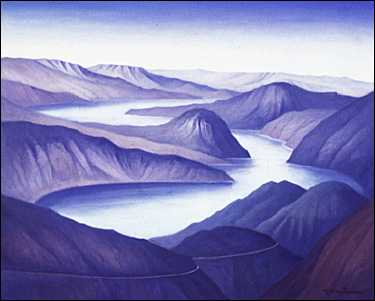
Although the majority of Orozco Romero’s work engages the human figure, in the mid-1940s he painted several landscapes of the central valley of Mexico and the surrounding mountain ranges. This untitled and undated work utilizes a color scheme similar to that of his mid-1940s landscapes and probably dates from this same period.
Untitled, c. 1945. Carlos Orozco Romero (Mexican). Oil on canvas: 30" x 39". Gift of Mr. W. W. McAllister, Sr.
Like many of his contemporaries, Orozco Romero traveled to Spain and France in the early 1920s and established friendships with modernist artists in Europe. Upon returning to Guadalajara, he accepted a government commission to paint murals. At the same time, he explored the expressive possibilities of wood engraving and lithography. From 1928 to 1932 he directed the Gallery of Fine Arts with Carlos Mérida, with whom he also founded the dance department of National School of Fine Arts in Mexico City. In 1940 he studied in New York on a Guggenheim Foundation grant and in 1958 was a founding member of La Esmeralda school of painting and sculpture in Mexico.
In 1980 the Mexican government honored his work by awarding him the National Prize in Arts and Sciences.